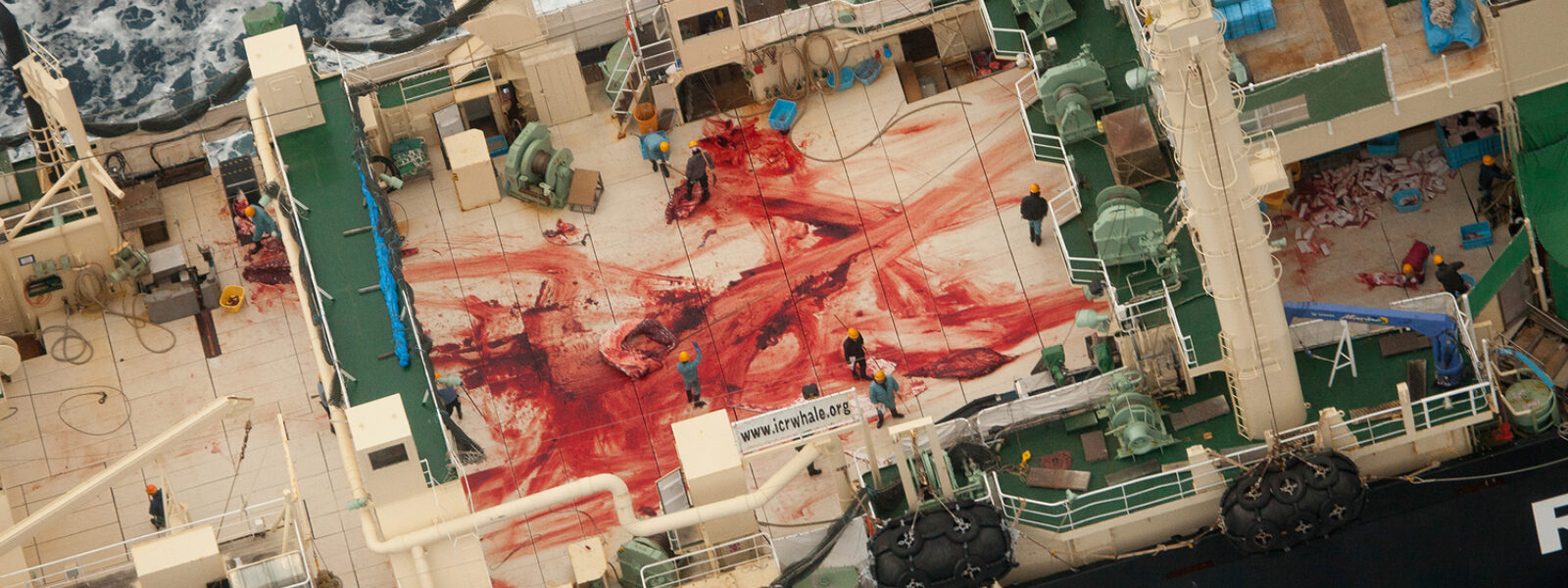

On July 1st, Japan’s whaling fleet set out in Japanese waters for their first “commercial” whale hunt in more than 30 years and managed to harpoon their first minke whales.
Of course, Japan has been slaughtering whales all along during these 30+ years in the North Pacific and Antarctica, while claiming it was not “commercial” whaling, but scientific “research” whaling. The end result was the same – a lot of dead whales offered in the country’s supermarkets and restaurants.
Despite a ruling by the International Court of Justice that the whaling was in fact not “scientific” in the least, the Japanese government continued the ruse until December 2018, when they announced they were leaving the International Whaling Commission (IWC) and starting up “commercial” whaling on their own, despite the moratorium approved in 1982 by a super majority of member nations of the IWC.
But their whaling business is now on very thin ground. Since they left the IWC, under the provisions of the Law of the Sea Treaty, they are prohibited from killing whales on the high seas. This means the lucrative whaling grounds of the Antarctic, where Japan has killed thousands of minke whales, are now off limits to the whalers. Japan’s fleet can only operate within Japan’s 200-mile EEZ. The Antarctic will indeed become a whale sanctuary at last, having been approved by the IWC but spurned by the government of Japan.
Furthermore, the Japanese government will no longer subsidize the expensive whaling industry with taxpayers’ funds, a major blow to continued viability for commercial whaling. With very limited populations of whales in Japan’s waters, due to years of “research” whaling, and with a declining interest among Japan’s consumers to eat whale meat, the whaling industry may very soon face its own economic extinction. Much of the whale meat from “research” whaling ended up in frivolous products like pet food and jerky, and even more was put into frozen storage. Whale meat makes up less than 0.1% of Japan’s meat, and most Japanese consumers find that other meats taste better and are cheaper.
The end cannot happen too fast – Japan’s notorious Fisheries Agency, which promotes whaling and the slaughter of dolphins and supports rapacious fishing fleets around the world (Japan is the world’s largest importer of fish), has set quotas for a total of 227 whales in Japan’s territorial waters. The quotas include 25 endangered sei whales (previous hunts for sei whales have gotten Japan in trouble with the Convention on International Trade in Endangered Species), 150 Bryde’s whales, and 52 minke whales. The whalers have until December to fill their boats with dead whales. They will also be hunting Baird's beaked whales, a toothed whale that is not under IWC jurisdiction.
Of course, these are all mostly very small baleen whales, except for the sei whale, the much larger species having been decimated by Japan’s whaling fleets working in unison with the fleets of Russia, Norway and other countries to bring these larger species close to extinction. The Japanese government tells its people and the world that the industry will not hunt endangered whales, but deceptively claim species like sei whales are not really endangered. The falsehoods continue from the Japanese government.
The International Marine Mammal Project (IMMP) of Earth Island Institute is working to end the killing of whales and dolphins permanently using the leverage of the upcoming 2020 Olympics in Tokyo. We are urging the Japanese government to end whaling and dolphin hunting permanently before the world spotlight is turned on Japan for the Olympic games.
Photo of Japan Whaling courtesy of Sea Shepherd Conservation Society.